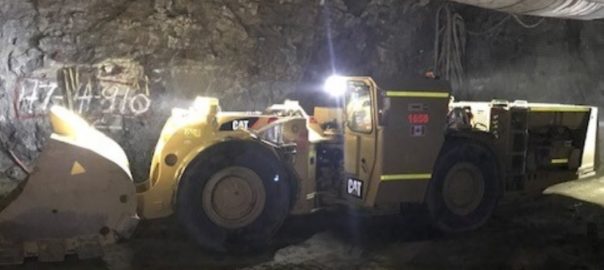Glencore has become the latest mining major to plot a path to reach “net-zero emissions”, with a plan that includes the use of battery-electric vehicles at one of its underground operations in Canada and renewable power at its South Africa ferroalloy sites.
The company has committed to reducing its total emissions footprint – Scope 1, 2 and 3 – by 40% by 2035 compared with 2019 levels, with an ambition of achieving “net zero” on its total emissions footprint by 2050.
It says it will achieve this by managing its operational (Scope 1 and 2) footprint; reducing Scope 3 emissions through investing in its metals portfolio, reducing its coal production and supporting deployment of low-emission technologies; allocating capital to prioritise “transition metals”; collaborating to enable greater use of low-carbon metals and support progress towards technological solutions; supporting uptake and integration of “abatement”; using technology to improve resource use efficiency; and taking a transparent approach to its sustainability reporting.
Ivan Glasenberg, Glencore Chief Executive Officer, said: “A significant portion of Glencore’s earnings is derived from the metals and minerals that enable the transition to a low-carbon economy. As the world prioritises renewable technologies, battery storage and electric mobility, our business is well-positioned to meet the growing demand for the commodities that underpin these future-focused industries. Our ambition to be a net zero total emissions company by 2050 reflects our commitment to contribute to the global effort to achieve the goals of the Paris Agreement.”
Getting down to specifics, Glencore, in a supporting presentation, singled out its ferroalloys business. These operations, in South Africa, represent the highest Scope 1 and 2 emitting industrial business within Glencore.
The company said it had set a specific target of a 10% reduction of its Scope 1 and 2 emissions by 2025 based on a 2016 baseline as part of the “broader Glencore commitment”.
It said the business was currently investigating the feasibility of working with a third-party independent power purchaser for the installation and supply of around 400 MW of renewable power, with the potential to reduce Scope 2 emission by some 1.17 Mt/y.
Glencore said its Rhovan open-pit mine and smelter complex, which mainly produces ferrovanadium and vanadium pentoxide, was, furthermore, working on a potential community involvement project to install a solar farm on-site that will deliver 11 MW for nearly nine hours a day at 80% efficiency.
“The ferroalloys business is also investigating a number of projects to convert waste gas into power at its smelters,” it added. This most likely includes the work it is carrying out with Swedish Stirling and its container-based PWR BLOK 400-F energy recycling solutions.
Looking to the uptake of new technologies to speed up its decarbonisation transition, Glencore referenced its Sudbury Integrated Nickel Operations, in Canada, and, specifically, its Onaping Depth project.
This deep nickel-copper mine includes the construction of a winze from the 1,200 m level laterally off the workings of Craig mine to access some 14 Mt of ore 2,500 m from surface. Currently under development, it has been designed to utilise state of the art battery-electric mobile mining equipment, maximised real-time remote operation, and monitoring and management utilising advanced Wi-Fi systems, Glencore said.
The benefits of using such technology include the elimination of diesel emissions and the reduction of noise pollution.
“The design includes the use of innovative ventilation technology, with cooling systems designed to be energy efficient, while coping with ambient rock temperatures that can reach 400°C at depth,” Glencore said.
On battery-electric vehicle technology, specifically, the company said it expects these zero-emission vehicles to play an increasingly important role in underground operations. It added: “going forward, new mines will look to utilise this technology”.
Glencore previously tested a proof-of-concept battery-electric vehicle trial based on the Cat R1300G LHD at one of its Sudbury Integrated Nickel Operations’ underground mines, which could have helped form the basis for the application of this technology at Onaping Depth.
After this trial, the company said: “Through using electric vehicles, Onaping Depth is expected to reduce its energy usage by 44% for ventilation systems and by 30% for cooling equipment, compared to an equivalent diesel-fuelled operation.
“Using EVs, Sudbury INO’s new mine will reduce greenhouse gas emissions by 44% and deliver considerable cost savings through reduced fuel and energy usage.”








